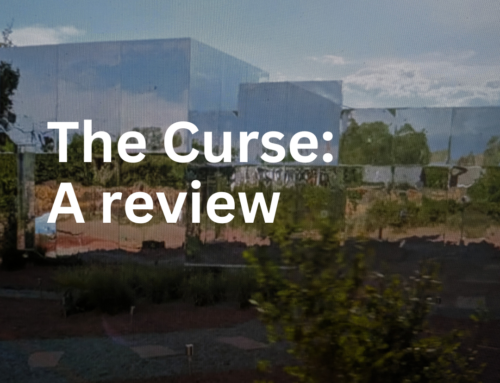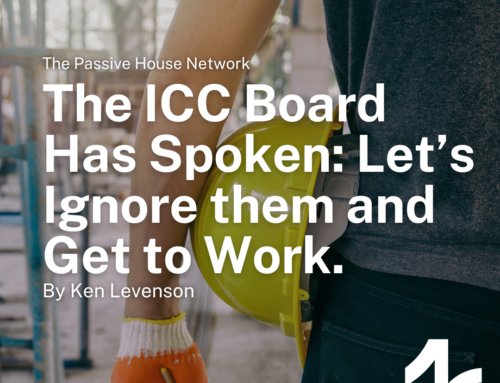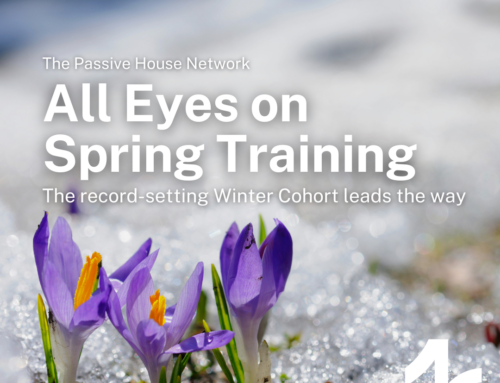A Polar Vortex of Misplaced Priorities
Millions without power and living conditions inside deteriorating rapidly as the temperature falls. The fossil fuel industry is calling for more fossil fuel production? The irony couldn’t go much deeper as the disaster is driven not just by the failure of fossil fuel production, but of course, that the industry is a big cause of the underlying climate disruption in the first place.
Yet, what’s really depressing is how this catastrophe plainly shows that our building industry is ill-suited to take on the problems of climate disruption and resilience. The widespread building failures should be shocking to everyone.
While the fossil fuel media has fun making a strawman of renewable energy production – the bottom line is that fossil fuel interests will lose the fight. Renewables have left the barn and the horizon of an all renewables future is approaching fast.
But what about the buildings? What about the people? This disaster should be a wake-up call. The building industry has failed miserably, and we might argue is not learning the right lessons as it lurches toward the phantoms of net-zero or net-zero-ready buildings. Let’s ask four basic questions:
1. What Future Are We Building For Anyway?
Today, extreme winter weather is disrupting and endangering lives across the US. Before that, extreme heat waves, firestorms and smoke. What was extreme 20 years ago no longer seems so. And what is extreme today will look like child’s play 20 years from now. If our buildings are to protect us and bring us comfort in a world of growing extremes, then maybe we should build them to standards that actually do protect us and provide comfort.
Of course we know how to do this effectively: build Passive House buildings. People in Passive House buildings may be encountering inconvenience, but my anecdotal reporting is telling me they are comfortable, in T-shirts without sweaters or even active heating, much of the time – and with no bursting pipes. Passive House doesn’t just provide low energy bills, comfort and excellent indoor air quality, its ability to shelter people without power is unsurpassed.
2. Is Energy Production Bias in Our DNA?
In moving from fossil fuels to renewables, does it strike anyone else as weird that there is so much emphasis on energy production, and so little on doing more with less energy? So little emphasis on making better buildings? We’ve largely gone from a mantra of drill, drill, drill – to a mantra of solar, wind, solar. We’re substituting one altar of production for another and missing the benefits of better buildings and better resource utilization. It’s like society, rather than practicing preventative medicine, with exercise and better eating habits, instead relies on drugs and medical procedures. Oh, wait, right.
Now, the push to zero carbon emissions seems driven almost exclusively by talk of renewable production and “smart systems”. Rather than really working to improve the health of our buildings, we’re effectively hospitalizing our built environment. You may see a smart system, but without underlying Passive House performance, it’s really an ICU.
We’re learning the wrong lessons, no? Why not provide greater comfort, safety and health while requiring drastically less energy production by building Passive House buildings. Let’s not let renewable energy production and smart systems marginalize high-performance buildings, instead, they should enhance high performance.
3. How Should Industry Respond?
Faced with an infirmed building stock and a counterproductive bias toward production, what’s the leading solution proposed by industry? Net Zero, or Net-Zero Ready. That’s net zero based primarily on production, not efficiency. Net Zero codes being proposed, seem to indicate that no one needs to worry much about making buildings significantly better. Of course there’s talk of it, but really, that’s so much work! (Green jobs anyone?) Instead, take this pill – you’ll feel good. And when we see those solar panels, we do feel good!
But wait, what? Are we really leading with that? It seems so. Let’s not kid ourselves, a net-zero building based on more power generation and inadequate efficiency will keep our buildings sick and weak, and us drugged by the illusion of protection.
In extreme weather, or in most weather, our buildings are still operating poorly, they are unsafe, and they require far too much energy. Is it too much to demand that our buildings provide basic comfort, health and safety, as a building, and not as a Tesla accessory?
4. Can We Do This Right?
At the dawn of the industrial age, the power of production was so intoxicating it replaced millennia of common sense. As we stand on the precipice of what will be a more significant shift in human fortunes, are we doomed to repeat the mistaken belief in the primacy of production? Or can we put efficiency and conservation first?
Let’s use the polar vortex to shake us out of our stupor. Of course, we must electrify and stop burning fossil fuels. But we must invest in deep efficiency and more robust resiliency. This means building a Passive House or retrofitting to Passive House Standards. Let’s make our buildings thermal batteries. Then, with the power out, temperatures remain steady, and we can rest easy in the next polar vortex, and in all the days between.
This week NAPHN, with the International Passive House Association, and all the other iPHA affiliates, launched a timely campaign: Efficiency: The First Renewable Energy. It should be a reminder to us all.
To start doing it right, consider Passive House training, connect the dots and never look at buildings the same way again.
#efficiencyfirst #phforall




